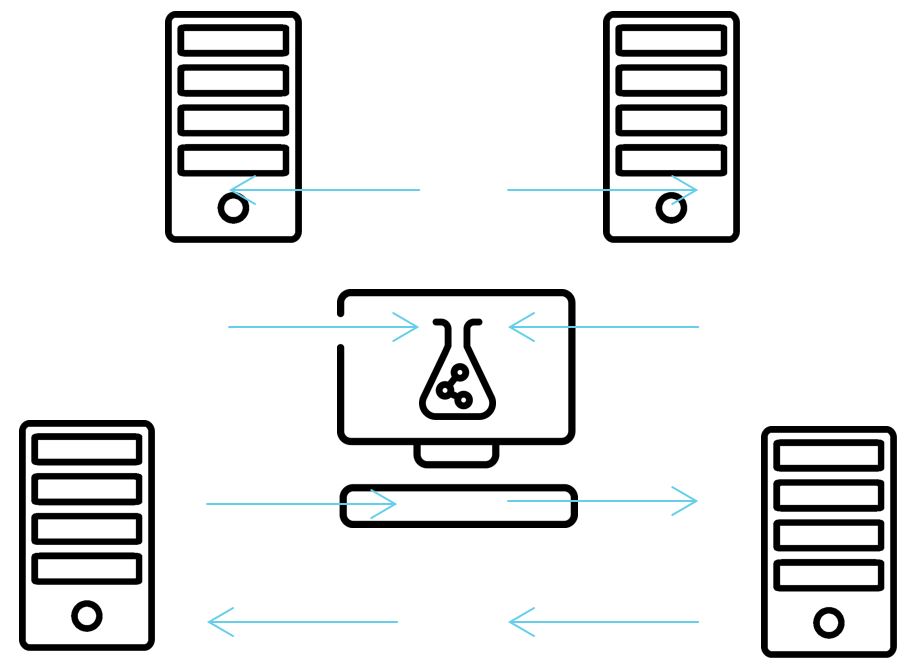サバ地域の小規模生産者による持続可能なパーム油とトレーサビリティ
SPOTSイニシアティブ
A fundamental principle of Clariant’s way of thinking is to only put a chemical substance on the market when its safety for human health and the environment is proven. Historically, the identification of toxicological hazards and risks relied on animal tests, which are still considered the gold standard by various regulatory provisions and assessment schemes. For some complex toxicity endpoints such as specific organ toxicity or reproductive toxicity, animal models cannot be replaced immediately. However, increasing ethical concerns coupled with the scientific need to use more human-relevant data has set the stage for the development of alternative approaches such as in silico, in chemico and in vitro methods to assess the human and ecological toxicity potential of chemicals.
Clariant supported the development of alternative testing methodologies early on through its concept of an intelligent testing strategy which predominantly focused on the ‘3R’ principles (Refinement, Reduction, Replacement of animal use).
Alternative approaches to animal testing
Changing chemical management policies and tightening regulation are driving a growing demand for scientific data directly associated with human-specific toxicity modes of action. To meet this demand, a variety of additional new non-animal approaches (NAMs) are now under evaluation by various scientific and regulatory groups to augment or eliminate existing traditional toxicological animal methods.
These new alternative methodologies are diverse and include inter alia high throughput assays, toxicokinetic (PBK) modeling, toxicogenomis and transcriptomics, bioreactivity and biomarker assays, 3D cell systems and computational toxicology.
Computational toxicology
Early on, Clariant was involved in the development of computer-based solutions working together with Cefic, the European Chemical Industry Association. The result – AMBIT – is a powerful open chemoinformatic computer-based structure-substance database designed to facilitate the identification of structural similarities and comparable mechanisms of action of chemicals and make better use of existing data to predict the effect profile at an early stage.
The AMBIT system consists of a database including more than 450,000 chemical structures and REACH (Registration, Evaluation, Authorization and Restriction of Chemical substances) dataset of 14,570 substances, with access given to Cefic-LRI (Long-range Research Initiative). Clariant uses AMBIT as a platform for its CompTox Suite – an in-silico tool to align reliable toxicological and ecological hazard and risk predictions of chemicals with sustainable portfolio management. Clariant’s CompTox Suite is a perfect tool supporting the observance of sustainability indicators regarding social, economic and/or environmental aspects and thereby linking sustainability with active chemical portfolio management from innovation and process development to improved portfolio performance. Being a combination of an in silico predictive tool for reliable risk and safety assessments of chemicals with capabilities of experimental verification of these predictions, it serves to provide early information on potential chemical hazards for developers searching for new chemical active ingredients as well as a screening tool for the identification of potential hazardous substances in an existing portfolio without the need of cost, time and resource intensive investigations.

As a computational prediction tool, Clariant’s CompTox Suite uses the fact that the physical, chemical and toxicological properties of a chemical are implicit in its molecular structure and that relationships also exist between the various properties of the chemical. This principle forms the basis for the prediction of toxicity from chemical structures / structural moieties / metabolites and allows read-across and category approaches as useful techniques in the safety (hazard / risk) assessment of chemicals. The read-across uses available endpoint information for one chemical to predict the same endpoint for another chemical. As a result, the number of animal experiments carried out for chemical registration purposes is significantly reduced. This is a considerable contribution to animal welfare.
Next generation risk assessment
In addition, experts from Clariant are actively involved in the development of principles for the next generation of risk assessment (NGRA), a new framework approach to integrate non animal testing methods (NAMs) into an exposure-led and hypothesis-driven safety assessment approach. NGRA is currently used within Clariant’s Product Stewardship organization to address the challenges arising from companies’ desire for safe cosmetic ingredients without the use of animal testing. At present, the application of NAMs is restricted largely to screening and the prioritization of chemicals whether they are of concern for a particular toxicological endpoint or not. However, in cooperation with research institutes and universities, Clariant’s experts are participating in the development and validation of new NAMs that are predictive of whether a specific bioactivity pattern is indicative of adversity as a significant prerequisite for hazard identification and thus for the regulatory acceptance of such new methods for risk assessment.
One of these projects was awarded with the Animal Welfare Research Prize 2019 which introduced a novel test system which can predict liver injury as well as the ‘no observed adverse effect level’ for liver toxicity.
Additional examples of currently ongoing cooperation with university-based research groups are related to developmental neurotoxicity and developmental immunotoxicity as emerging toxicological endpoints in the context of various new regulatory frameworks such as the European Union’s Chemicals Strategy for Sustainability.

